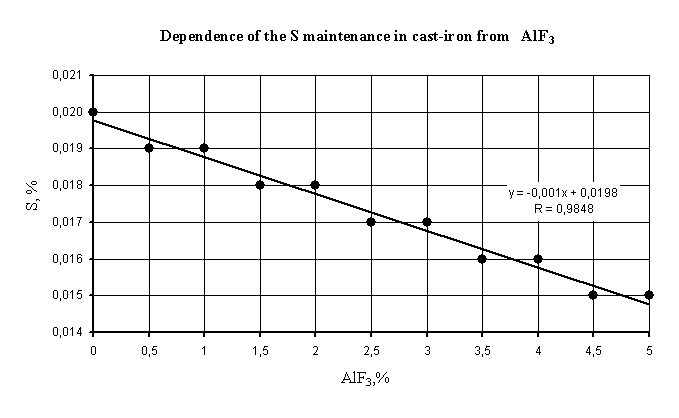

|
Main page Master's degree work Literatureie references |
"Development and research of methods of the blast-furnace melting with insufflation in the furnace of powdery fuel with the purpose of intensification of process of deleting of sulphur."
|
On today the technology of insufflation of coal dust in a high furnace is front-rank. In connection with low quality of the blown coals and promoted maintenance in them of sulphur there is the necessity of compensation of arrival of sulphur in cast-iron. There are two basic directions:
1. Development of methods of deleting of sulphur from cast-iron out of high furnace.Presently most technical projects of metallurgical factories correspond to the first direction. The second needs a substantial revision. Practice shows that application of process of deleting of sulphur out of high furnace is justified then, when results the receipt of which is impossible in a basic technological aggregate or related to the severe losses of productivity are required, by the promoted expense of materials. To my mind there are the ways of deleting of sulphur at smelting of cast-iron in a high furnace without the serious losses of productivity.
According to world experimental practice in high furnaces the following pulverulent components can be blown:
1. lime (CaO);
2. shallow particles of cast-iron and ferrous change - cheap substitutes of iron-stone;
3. dust of filters - utilization of wastes.
In work the possibility of increase of absorption of sulphur is considered by slag of blast-furnace. Insufflation of oxides (Ce2O3) and fluorine of cerium (CeF3) and fluorine of aluminium (AlF3) as a dust is offered to that end.
Thermodynamics computation was conducted by the computer program "ÎÐÀÊÓË" (in a basis the model of equilibrium of the system is stopped up metal - slag). Computation showed that application of resulted in the increase of equilibrium maintenance of the dissolved sulphur in cast-iron. The input of CeF3 and AlF3 results in the decline of equilibrium maintenance of sulphur in cast-iron. AlF3 is more effective connection which deletes sulphur, on comparison with CeF3. In a clean kind AlF3 in nature does not meet, but can be transferable by a cryolite. AlF3 enters in the complement of cryolite. Mechanism of deleting of sulphur at the input of fluorin's connections, from all appearances, is related to the flowline of reactions of exchange in deeply restoration terms and will be direction of further researches.



Thus in work the effective way of deleting of sulphur in cast-iron due to utilization of wastes of other industries of metallurgical industry without the considerable losses of productivity is considered. The entered reagents make no more than 5% from mass of shlaka. Application of greater quantity of additions will entail making of shlaka of high furnace heavier, and also loss of fluidity and productivity. It is extremely undesirable. Basic direction of research is concentrated on theoretical and practical confirmation of possibility of the effective use of fluorin's connections as additives to the coal dust.